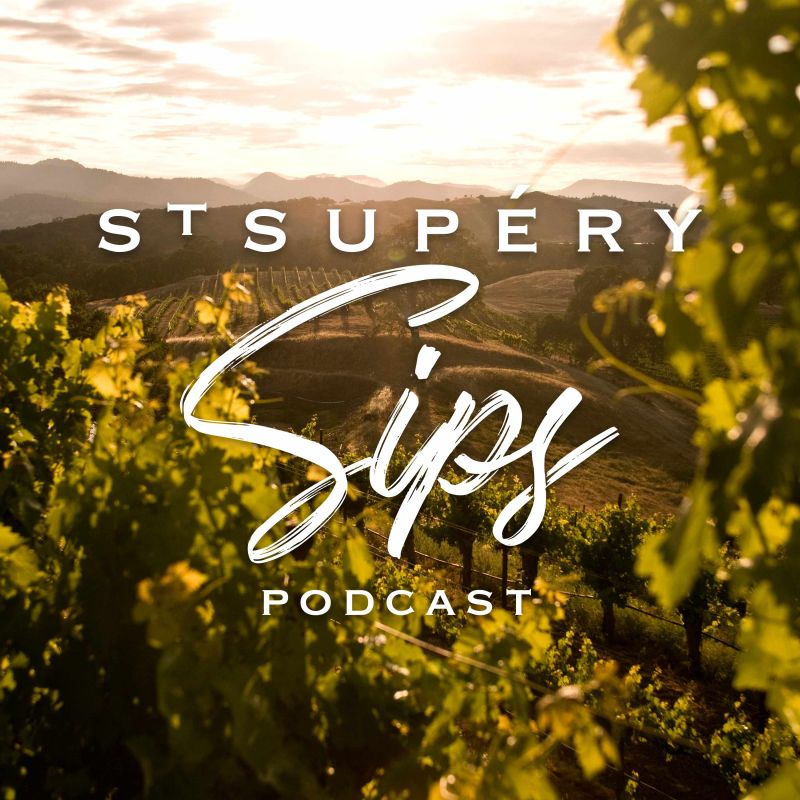Related Articles


St. Supéry Sips Episode 7: All About Rosé
July 12, 2022

Podcast Episode
St. Supéry
June 14, 2022
St. Supery Sips Episode 6 – Part 2:
Celebrating Sustainable Seafood with Chef Stuart Brioza
At St. Supéry Estate Vineyards & Winery, the commitment to sustainability runs deep. Not only does the winery hold Napa Green certifications for both its vineyards and winery, St. Supéry is a dedicated champion of sustainable seafood. Just as sustainably farmed grapes are the basis for St. Supéry’s estate-grown wines, the winery seeks out sustainable seafood for its culinary program and highlights responsible purveyors through its annual Great Sustainable Seafood Tour.
In the latest episode of the St. Supéry Sips podcast, part two in a series of conversations with prominent California chefs, winery CEO Emma Swain chatted about sustainable seafood with Stuart Brioza, chef and co-owner at State Bird Provisions, The Progress, and The Anchovy Bar in San Francisco.
Brioza’s passion for sustainable seafood began when he opened State Bird Provisions in 2012. He carried that enthusiasm over to The Progress and The Anchovy Bar, which opened in 2014 and 2020, respectively. At all of his restaurants, Brioza aims to use every part of the animal or plant to avoid food waste.
“We wanted to figure out a way to crack the code on how you can serve every bit and bubble of every plant or fish or animal that was coming through the door,” he said. “We roast turnips, for example, and we serve a beautiful little turnip dish and then the greens become another dish.”
The same is true for seafood. Rather than creating just one dish from a particular fish, Brioza uses different parts—including the collar, belly and tail—to make four or five different dishes.
“We have a mantra in the restaurant that the compost bin is a missed creative opportunity,” Brioza said. “Is there an opportunity within whatever that ingredient is that we could turn into something delicious?”
Putting Sustainability First
For restaurants that prefer not to use all parts of the fish, modern flash-freezing technology allows seafood purveyors to ship only the parts the customer plans to utilize. This cuts down on waste and reduces the carbon footprint of transporting the fish to customers.
“You’re not shipping heads and tails and bodies that are going to go into someone else’s compost,” Brioza said. “I think as chefs, it’s our responsibility to embrace this idea of frozen seafood and look at it as a sustainable tool. It’s another important lesson that we can teach and be taught from those who are doing incredible work in this area.”
Aside from looking at new techniques to promote sustainability, he added, it’s imperative for chefs to do their homework when choosing a seafood purveyor. Brioza continually asks his providers about how and when the seafood is harvested, and whether they are working within environmental regulations. “You just listen,” he said. “You ask a lot of questions.”
This becomes more difficult when working with fisheries outside the United States. “The relationship with the oceans is much different and the areas of sustainability are less important,” said Brioza. “I think we need to flip that conversation. Many countries are all about the quality first, and I do agree that quality absolutely has to be there. But it’s got to be sustainable first.”
Embracing Sustainable Species
In choosing species to feature on his menus, Brioza loves to include oysters, clams, mussels and scallops, because they can be farmed sustainably, and their habitats also benefit other marine life.
The challenge of farmed seafood, he noted, is that it can require a lot of wild seafood for feeding—for example, shipping live anchovies to other parts of the world for tuna farming operations. That’s why he prefers to support aquaculture that relies more on algae-based food.
“I think it really works from a nutritive standpoint and also the environmental standpoint on all levels,” he said. “If your oysters are being farmed in a very healthy environment, [they] are going to taste better. They’re going to look better. They’re going to be much more resistant to any sort of fluctuations in temperature.”
Brioza also champions fresh anchovies, which have a short growth cycle and can repopulate quickly.
“I’m looking at anchovies as the future of food in so many ways,” he said. “In the Bay Area we have a very long history of anchovy fishing, and we have a healthy, abundant stock. For me as a chef, anchovies have truly changed how I look at the food system and what’s important. I would gladly take an unbelievably fresh anchovy over any other seafood.”
Seaweed Sustainability
Seaweed, which sequesters carbon in the world’s oceans and helps with regeneration, is another increasingly important ingredient for Brioza.
“We use it at all three restaurants in different ways,” he said. “We use it for a whipped butter that we simply serve with potatoes. At Progress we do a fermented vegetable seaweed broth that’s paired with farmed abalone that lives on a diet of seaweed. I think we’re going to see more and more seaweed in the future because of this idea that [it] is a very renewable resource.”
Along with an increase in seaweed farming, Brioza said he is seeing a shift in seafood’s role on the plate. Instead of taking center stage, it is playing an equal role with vegetables and other ingredients.
“That’s how I’m approaching the future of seafood,” he said. “We need to reappropriate how we consume our proteins,” which will require restaurants to change guests’ expectations about seafood portion sizes. “At Anchovy Bar we don’t really have entrees,” he said. “We have lots of small seafood dishes that are paired with lots of vegetables.”
For more on chefs and sustainable seafood, check out Part 2 of this episode, which features Kyle Connaughton, chef and co-owner at SingleThread in Healdsburg.
# # #
Check Out These Sustainable Seafood Recipes
June 27, 2022